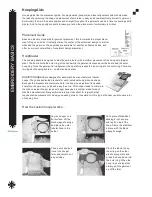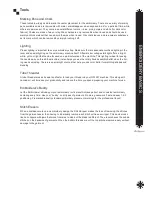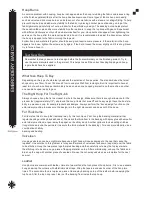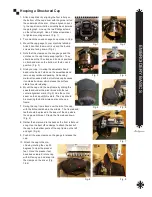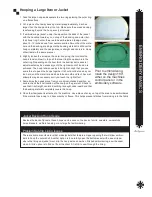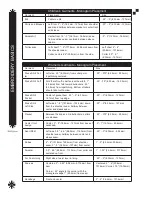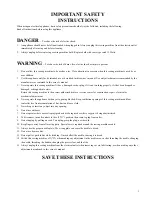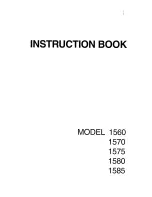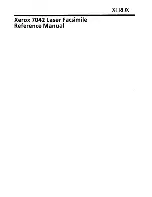
EM
B
R
OI
D
ER
Y
B
A
S
IC
S
26
Men’s Garments - Monogram Placement
Garment
Placement
Size
Dress Shirt Collar
Left side, .25" (6.35mm) above buttonhole from
collar point centered.
.25" - .375" (6.35mm -
9.52mm)
Dress Shirt Cuff
For top center of wrist, start 1" (25.4mm) from cuff
center toward buttonhole, .25" (6.35mm) above
cuff edge. Bottom of letters should fall at cuff bot-
tom.
.375" - .75" (9.52mm -
19.05mm)
Dress Shirt Pocket
Center of pocket hem, .25" - .5" (6.35mm -
12.7mm) from top edge.
.25" - .375" (6.35mm -
9.52mm)
Pocket Flap
Center of flap
.25" - .375" (6.35mm -
9.52mm)
Pocket Flap with
buttonhole
Right of buttonhole
.25" - .375" (6.35mm -
9.52mm)
Ties
1.5" - 2.5" (38.1mm - 63.5mm) up from bottom tip.
If wearing a vest, then 9" - 11" (228.6mm -
279.4mm) up from tip.
.25" - .5" (6.35mm - 12.7mm)
Sport Shirts
Left side, 7.5" - 9" (190.5mm - 228.6mm) from
the shoulder seam, halfway between placket and
sleeve seam.
.25" - .5" (6.35mm - 12.7mm)
Robes
7" - 10" (177.8mm - 254mm) from shoulder seam,
3" - 5" (76.2mm - 127mm) from center.
1" - 2" (25.4mm - 50.8mm)
T-shirts
Left chest 7" - 9" (177.8mm - 228.6mm) down from
the shoulder seam.
Center front - 5" (127mm) down from the collar
(Make adjustment for large sizes).
2" - 4" (50.8mm - 101.6mm)
Above The Pocket
Customer preference.
Always align with the top
edge of the pocket.
Center Chest
6" to 4" from the bottom
edge of the ribbing to the
top of the design.
Boxers
Find the center front by
matching the seams.
Then match the center
front with the side seams
to find the spot.
Center of design down
from the shoulder
Women 7" - 8"
Men 8" - 9"
Over 4" - 5"
from the
center
of the placket
Above The Pocket
Customer preference.
Always align with the top
edge of the pocket.
Center Chest
6" to 4" from the bottom
edge of the ribbing to the
top of the design.
Boxers
Find the center front by
matching the seams.
Then match the center
front with the side seams
to find the spot.
Center of design down
from the shoulder
Women 7" - 8"
Men 8" - 9"
Over 4" - 5"
from the
center
of the placket
Summary of Contents for GS1501
Page 30: ...GETTING STARTED 28 ...
Page 31: ...GETTING STARTED 29 The Control Panel Display ...
Page 62: ...EMBROIDERY BASICS 28 Notes ...
Page 64: ...MACHINE BASICS 2 ...
Page 65: ...MACHINE BASICS 3 ...
Page 70: ...MACHINE BASICS 8 ...
Page 71: ...MACHINE BASICS 9 ...
Page 78: ...MACHINE BASICS 16 Notes ...


